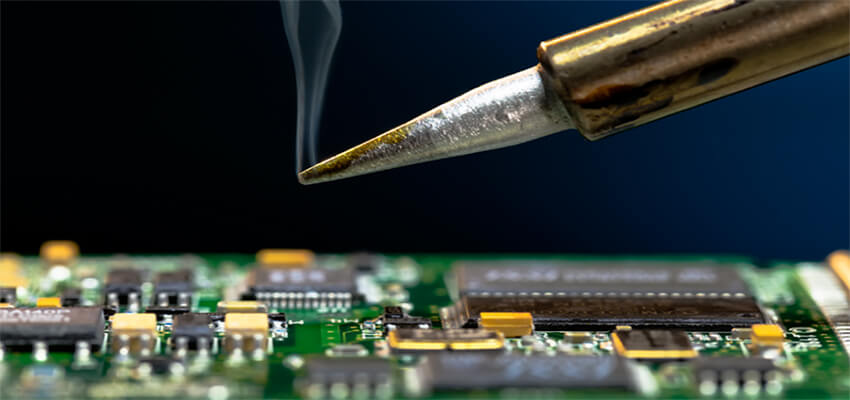SMT is a form of packaging for semiconductor components. SMT involves various styles of components, many of which have formed a common industry standard, mainly some chip capacitors, resistors, etc. Then how to manual solder SMD mounted components?

1. Manual soldering point by point
1) Hold the SMD component with tweezers, and place it on the corresponding solder pot in the center. After aligning, hold it down with tweezers and do not move it.
2) Use a fine brush to dip the flux or apply a small amount of flux to the pads at both ends with a flux pen.
3) Use a chisel-shaped (shovel-shaped) soldering iron tip to add a little solder wire with a diameter of less than or equal to 0.5mm. When the solder wire touches the soldering iron head, it should leave quickly, otherwise the patch processing solder will be added too much.
4) First, use the soldering iron tip to heat one end of the pad for about 25 degrees, and then withdraw the soldering iron.
5) Then use the same method to heat the other end of the pad for about 2s, and spread the soldering iron away.
Remark: During the soldering process, the component should always be kept close to the pad to avoid one end of the component from floating.

2. Soldering with special tool horseshoe-shaped soldering iron head
1) Place the components, press and hold them after aligning them and do not move them.
2) Apply a small amount of flux to the pads at both ends with a fine brush flux or a flux pen.
3) To the horseshoe tip.
4) Use a horseshoe-shaped soldering iron tip to heat the pads at both ends at the same time for about 2s, and withdraw the soldering iron.

3. Fast Soldering with flat-shaped iron head
1) Place the components, press them with tweezers after alignment and do not move them.
2) Apply a small amount of flux to the pads at both ends with a fine brush flux or a flux pen.
3) Tin the flat-blade tip.
4) Use a fan-shaped grid iron tip to heat the pads at both ends at the same time for about 2s on the side of the component, and throw away the soldering iron.

